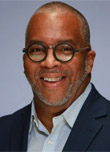Raising Minority Enrollment With Creativity And Collaboration
By Van R. Johnson, ABA, BA, vice president commercial strategy, Benchmark Research

The growing need for increased diversity in clinical trials has been emphasized a great deal over the past few years. But the fact is, it can’t be emphasized enough. The FDA has issued several statements and guidance documents surrounding the importance of a diverse population in clinical trials. But the question remains: Are we seeing an increase in the number of individuals from the underrepresented community enrolling in clinical trials?
Clinical Trials Became Less Diverse Since 2018
Per a 2018 report from the FDA on its Drug Trial Snapshots1, there is a major imbalance in the representation of underrepresented populations in clinical research. As it pertains to participants in clinical trials, whites made up 69% of research participants, Blacks/African Americans made up only 11% of trial participants, Hispanic/Latinos were 14% of trial participants, and Asians represented just 10%.
Two years later, in spite of diversity efforts, we see an overall decline in underrepresented community participation; FDA numbers for 20202 show a slight shift in the racial composition of clinical trial participants. The report shows that among clinical trial participants, 75% are white, which represents an 8.7% increase, and 8% are Black, which is a 28% decrease from 20181 numbers. Hispanic/Latino participation dropped to 11%, which is a 21% decrease, and Asian participants decreased from 10% to 6%, a 40% drop.
The numbers show that we still have a long way to go. It’s time to go from simply talking about it or having a diversity plan for plan’s sake or slapping the diversity tag on our website to truly being an advocate for initiatives to increase diversity in clinical trials. Some organizations are making great strides in the push for real diversity but the question that I often hear is, “What more can be done?”
Time For Out-Of-The-Box Recruitment Efforts
I believe that it’s time for some out-of-the-box thinking. I can’t speak for what can create a rise in every underrepresented group and/or subgroup. But what I do know is that we should pull out all stops. Let’s throw everything against the wall (legally, ethically, and proverbially, of course) and see what sticks. In the African American community, for example, I have mentioned and heard mention of going to churches, community organizations, HBCUs (Historically Black Colleges and Universities), and other recommendations for outreach.
An article published by the NIH titled Health from a Trusted Source: Barbershops Bring Health Services to African American Men2 made me sit up and take notice and say, “Now that’s some out-of-the-box thinking.” For many in the African American community, the barbershop and the beauty salon are sacred. A barber in the article informs that many barbers play multiple roles: barber, marriage counselor, fashion consultant, etc. Why not use this “sacred” platform to discuss healthcare as well?
Stephen Thomas, Ph.D., professor at the UMD School of Public Health and director of the Center for Health Equity, is looking to partner with willing establishments with local universities and hospitals to address this growing health problem. What a novel and out of-the-box” idea!
A Familiar Face To Raise Minority Recruitment
Having the right people on the ground advocating for diversity can make all the difference. A perfect example is one I experienced early in the COVID pandemic when there was a great deal of conversation surrounding the diversity issue. Many were attempting to educate the masses via a variety of approaches. Our organization has been big on diversity well before COVID made diversity a big topic, but Benchmark Research CEO Mark Lacy and CBO Cynthia Dukes joined the fray and appeared on several television news broadcasts, radio talk shows, and the like to bring proper information to and dispel any misconceptions within the local communities.
After one particular broadcast regarding diversity in COVID vaccine trials, Mark asked what I thought about his presentation. After thinking about it for a moment, my reaction was, “Mark, the interview and information presented were great. However, you can easily be viewed as just another white guy telling the minority community what they need to do!” There was a pregnant pause during which time I thought, “Is my resume up to date?” However, his response was, “You know, you’re right. I want you to start doing some of the media spots from now on.” It was now time to put my proverbial money where my mouth was.
The benefits of having someone in your organization that matches the community in which you serve are innumerable. But even with that, some training should be required. Cultural competencies, geographical idiosyncrasies, and various familiarities can be true value-adds when looking to relate to the community. The individuals addressing the public need to be educated before they can be educated.
All entities must have some skin in the game if we are to make a signific change for inclusivity for all in clinical trials. Many pharmaceutical sponsors and CROs are stepping up to the plate to assure that clinical trials include a diverse population so that future medicines benefit all.
Back on May 20, 2022, I had the honor of sitting on a panel at Society for Clinical Research Sites’ (SCRS) first Diversity Summit in Austin, Texas. At some point, the conversation shifted to what the CROs and sponsors could do to help move the needle regarding diversity. One of the common themes was funding. Many sites don’t have the staff bandwidth to send individuals out into the community for outreach and targeted recruiting. The ability to meet the people where they are is crucial in recruiting, and possibly even more so in the underrepresented communities. I do not doubt that if all stakeholders could work collaboratively, more could be accomplished. If a CRO or sponsor does not have its own internal diversity program, why not partner with a site organization that does and share tasks? Many hands make light work.
I’m optimistic that we will make a significant dent in the inclusion of the underrepresented in clinical trials. With all entities being on the same page, we can use all available resources, from DCTs (where applicable) to a site that I know of that converted an ambulance and uses it to go out in the community (meeting the people where they are) to getting the necessary training in an effort to talk the talk while walking the walk. I’ve got my fingers crossed.
Resources:
- Drug Trials Snapshots Summary Report 2018 (fda.gov)
- 2020 Drug Trials Snapshots Summary Report (fda.gov)
- NIH (2019, June 25). Health from a Trusted Source: Barbershops Bring Health Services to African American Men. Retrieved from https://nimhd.nih.gov/news-events/features/community-health/barbershops.html
About The Author:
 Van Johnson is vice president of commercial strategy at Benchmark Research, a vaccine clinical research and consulting firm. Van also heads up the business development efforts for VaxCorps, a consortium of sites with vaccine experience, and participates in the business development efforts of hyperCORE, a site network of networks. Van developed and operates Minorities Advancing Clinical Research Operations (M.A.C.R.O.), the clinical trial diversity initiative of Benchmark. Van also serves on the diversity committee of the SCRS and has spoken at several summits.
Van Johnson is vice president of commercial strategy at Benchmark Research, a vaccine clinical research and consulting firm. Van also heads up the business development efforts for VaxCorps, a consortium of sites with vaccine experience, and participates in the business development efforts of hyperCORE, a site network of networks. Van developed and operates Minorities Advancing Clinical Research Operations (M.A.C.R.O.), the clinical trial diversity initiative of Benchmark. Van also serves on the diversity committee of the SCRS and has spoken at several summits.
